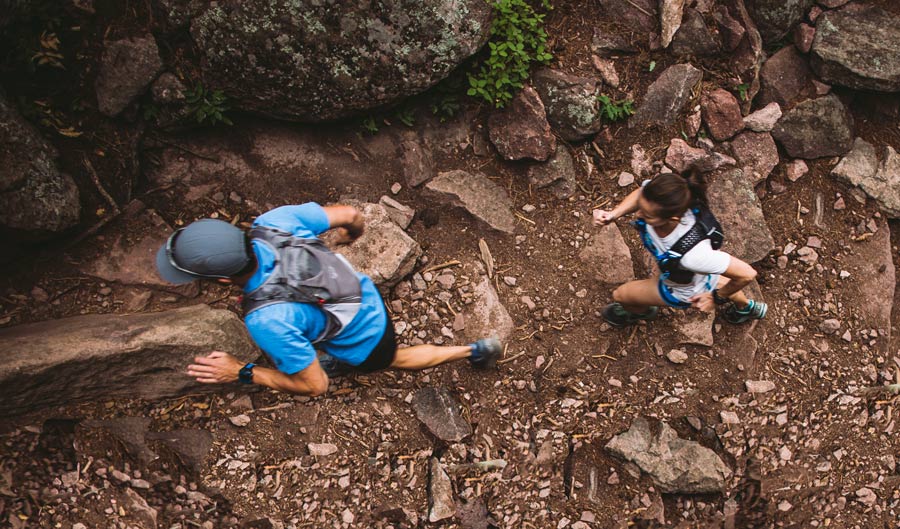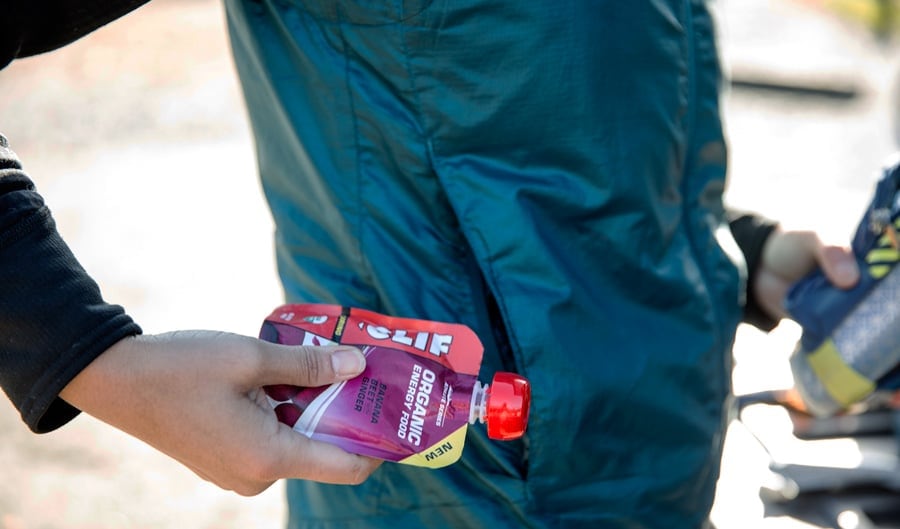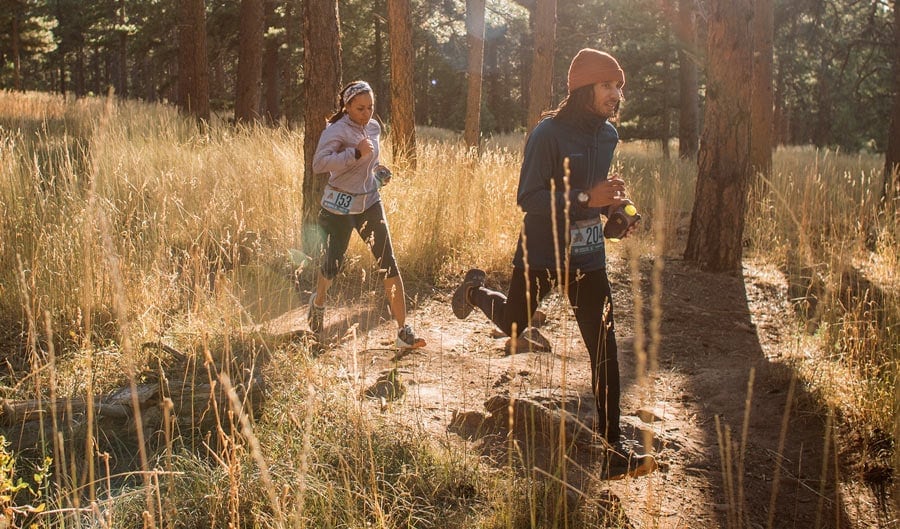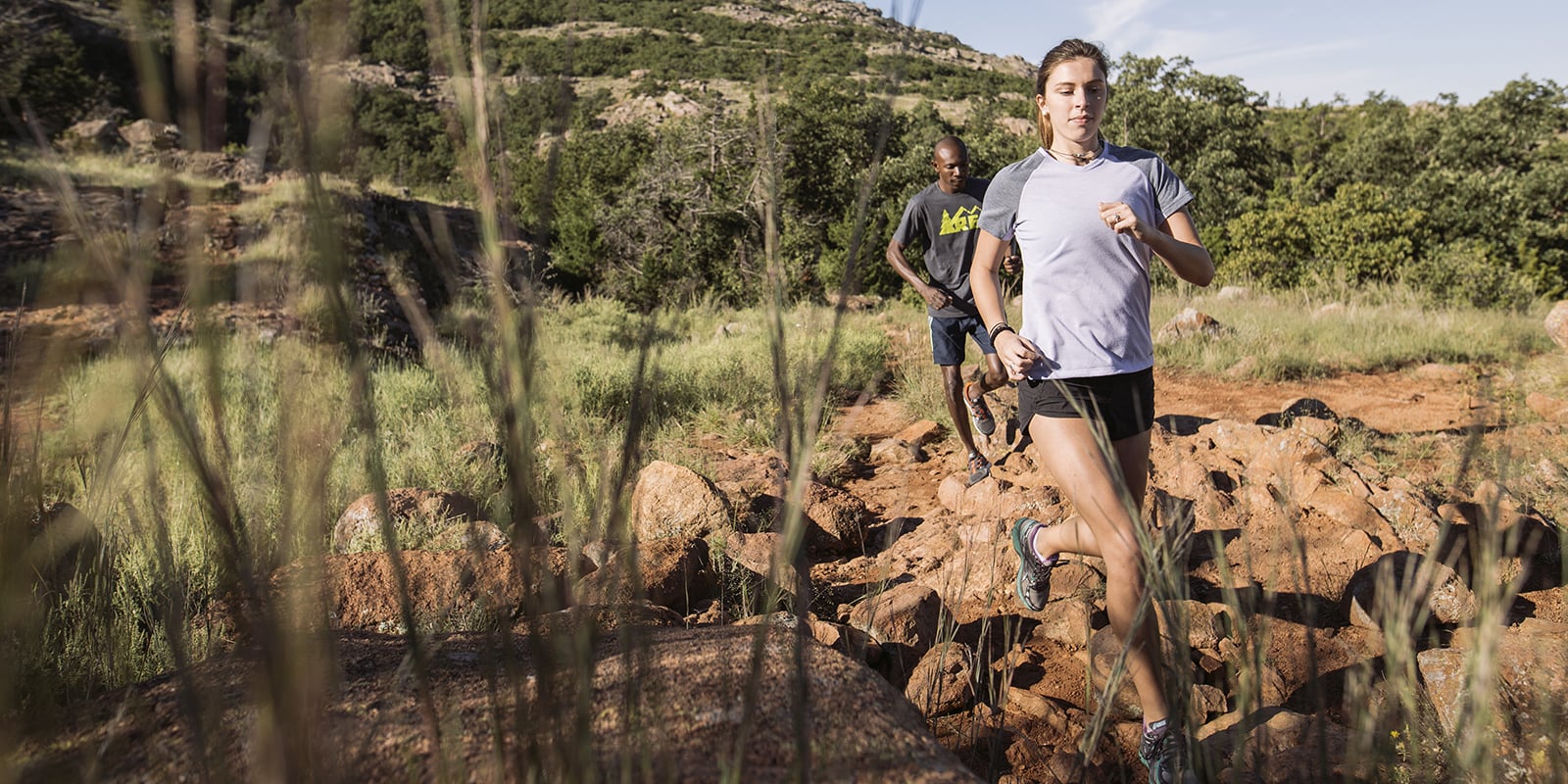Signing up for an ultra can feel like stepping into the realm of the uber achiever. Ultrarunners will tell you, though, that you are really joining an extraordinary community of people: that an ultra is more a celebration of running than a competition.
That's not to say that you're not signing up for a physical test. Ultrarunners will also tell you that the ability to overcome suffering, and even to embrace it, can produce a state of ultra-euphoria not achievable by runners of lesser distances. For most ultrarunners, to finish is to triumph.
If you're ready to embrace that challenge, this article will give you tips for:
- Picking your first ultra trail-running event
- Nutrition and hydration planning
- Pre-race steps, including both physical and mental preparation
- Race-day strategies and tips
Types of Ultras

By definition, an ultramarathon is any race longer than a marathon (26.2 miles). Ultras come in all sorts of flavors, with races listed in kilometers, miles or hours. Examples include 50K, 100K, 50-mile, 100-mile, 6 hours (finisher distances can range from 25 to 50 miles), 12 hours and more. You can also find multiday ultras.
Distances aren't standardized either: You might find a 55k event or a 32-mile event, for example. And a single event will often offer courses of varying distances.
Picking Your First Ultra
Trail running's surging popularity has spilled over to the ultra world, meaning you have an abundance of options. As you consider your choices, keep the following in mind:
Start with a 50K (31.2 miles): Though only slightly longer than a marathon, those five extra miles can be a beast. "The wall" still looms for many at about 20 miles, meaning you might have to summon your superpowers to complete a double-digit (11-mile) grind to the finish line. After you complete a 50K, then you can start to dream about longer distances.
Decide if you want to go legendary or local: Iconic races like Wisconsin's Ice Age 50, Wyoming's Big Horn Trail Race and California's Tahoe Rim Trail Endurance Runs sell out fast, yet also offer top-notch organization and a festival-like atmosphere. Local events offer more attainable entries and a welcoming, low-key vibe.
Think about making it a vacation, too: That's an easy call if you're traveling to a spectacular setting. Those races are likely to sell out quickly, too, so sign up early. Then consider the timing of the event. Most people schedule the race near the start of a trip to allow recovery time afterward. If you need to acclimate to high altitude or heat, though, then you'll need to schedule the race closer to the end of your trip.
Consider camping or lodging details: Many trail ultras are in remote areas, so you'll need to arrange for nearby camping or lodging. If it's a popular event, book a site or room well in advance to be sure you get a spot. Most races start early in the morning, so staying as close as possible is desirable.
Allow sufficient training time: For a 50K race, you need to train for about four months. Follow whatever training regimen works for you. One option is our 16-week training plan for a trail marathon: Follow it, repeating week 12, to create a 17-week 50K training calendar.
Where to Find a Trail-Running Race:
Local running clubs classes and stores: These can provide you with both race recommendations and training support. Your local REI store is a great place to start.
Online resources: A growing number of websites have searchable race calendars. Look at both general running sites and trail-running sites.
Nutrition and Hydration Plan

When you're running ultra-long distances, you have to be as concerned with your nutrition and hydration as you are with your physical training. You should be fine-tuning your nutrition and hydration plan throughout your training schedule. Below are some basic guidelines, along with links to articles for more details.
- Pre-hydrate: Drink 17-20 fl. oz. about two hours before you run so you'll start off properly hydrated.
- Maintain hydration: Drink about 5-10 fl. oz. (or a few good long drinks) of water every 15-20 minutes while running.
- Pre-fuel: Have a light meal at least an hour or two before the race. You don't want to arrive at the start hungry, or to expend energy to digest things that are high in fat or fiber during the race.
- Eat up: For ultra runs, you should consume 200-300 calories (mostly from carbohydrates) per hour while running.
The above are rough guidelines: For more details about how needs vary for different people and different conditions, read our Hydration Basics for Trail Running article and Nutrition Basics for Trail Running article.
Factor in details about the aid stations
You can run with less weight if you are OK with what the race organizer provides. Even so, you need to evaluate how many stations the race has and how far apart they are. Aid stations sometimes run out of things, too, so carry enough food and water to skip an aid stop if you need to.
Pre-Race Steps
If you've been trail running for a while, especially at longer distances, your gear setup should work fine for a 50K race. You can set yourself up for success, though, by taking a few pre-race steps:
Check the event website ahead of time to answer all of your questions. You don't want any surprises come race day.
Study the course details. You need to know where you'll be going and which sections might be mentally or physically challenging. Also check to see if there are any special rules for your race.

Plan to run by effort, not pace. Factors like elevation profiles, trail conditions, weather and altitude can make races of the same distance dramatically different in terms of difficulty. Runners who focus on pace, not heart rate, set themselves up for early burnout.
Try to make your long-run training days mimic your race day. You can't simulate all the pomp and circumstance, but you can match your planned running pace, what and when you eat, as well as the time you start. Race day will go smoother if it feels familiar.
Look at the weather forecast. Then bring appropriate layers.
Lay out your gear the night before. On race day, you can just grab and go. Include a map and compass, too, because racers can and do stray off course.
Customize your first-aid kit. Whether it's a particular brand of anti-chafing cream or some prescription medications, plan to be your own first responder.
Decide how you'll attach your race number. Many race belts, as well as hydration vests and packs, have an attachment system. Safety pins also work.
Check batteries in your fitness device. Using a tracker or GPS watch can help you prevent race-day adrenaline from turbocharging your pace so that you bonk halfway through the event. You want both your batteries and your body to last.
Pick up your race packet early. Why wait until the day of the race? That simply adds one more complication to the Big Day.
Two nights before, get a good night of sleep. Most runners are too amped up to sleep well the night before, so this is your best chance to get quality sleep.
Make sure your toenails are clipped. Why inflict damage upon yourself?
Race-Day Tips

After all the training and prep work, this is your moment. Embrace it. The tips below should make things run more smoothly:
Arrive early. Plan for a mandatory pre-race meeting or timing-chip pickup (if your race requires either one). Give yourself enough time to overcome unanticipated traffic snarls.
Ease into the race. Relax and settle into a comfortable spot in the pack. Resist the urge to exceed your training pace.Some ultrarunners also recommend backing off slightly on your effort level, especially at the start, because you have a long way to go.
Feel free to run with someone: It's common for runners to buddy up with other competitors, sometimes even chatting as you run. It's the communal ethos of an ultra.
Be proactive in fixing problems: Stop and deal with things like blisters and chafing right away. In a race this long, pushing through pain is a recipe for not finishing. If a muscle is sore, stop and stretch.
And be willing to slow down and walk—in uphill sections to give yourself a break and in gnarly downhill sections to prevent a serious tumble. Linger at aid stations to consume fuel and rest, then start slowly as you ease back into the race.
Focus on staying on course, and be ready to turn around. Wayfinding can be tricky, especially in races with multiple distances. Sections are often shared, so it's easy to accidentally follow someone who's on a different course.
Keep a close eye on your course's markers. And if you ever come to a junction that lacks your course marker, turn around and run back to the previous junction because you've almost certainly made a wrong turn there.

